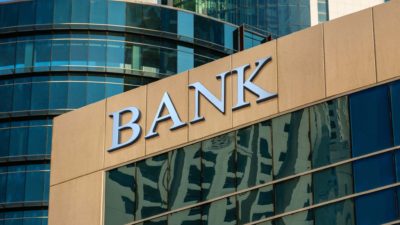ASX bank investors have to endure a roller coaster ride as the market falls in and out of love with the sector.
The share prices of the big four crashed as the COVID-19 crisis unfolded and quickly rebounded on a FOMO buying frenzy.
That bounce quickly petered with bank stocks copping the brunt of the selling today. The Westpac Banking Corp (ASX: WBC) share price was the worst in the group with a 2.9% decline to $17.38.
But the National Australia Bank Ltd. (ASX: NAB) share price and Australia and New Zealand Banking GrpLtd (ASX: ANZ) share price weren't far behind with around a 2.7% fall each.
The Commonwealth Bank of Australia (ASX: CBA) share price is the outlier (as usual). Shares in our biggest domestic bank shed 1.5% to $66.30 and is the only one in the group that outperformed the 2.2% drop on the S&P/ASX 200 Index (Index:^AXJO).
The bank valuation debate
Investors are blowing hot and cold towards the sector as experts can't seem to quite agree on whether these stocks are cheap or expensive.
The debate centres around bank's return on equity (ROE) and price to book value (P/B). The Australian Financial Review reported that a consensus view seems to be forming around the sector's post-coronavirus ROE of around 10%.
The P/B multiple is also fairly black and white with the big banks trading at around 0.9 times, with the exception of the higher quality CBA at 1.5 times.
The problem is working out if these measurements represent value in the face of growing loan defaults after government support ends in September.
Multiple earnings headwinds
The Australian Banking Association data shows that the total number of deferred loans stand at nearly 800,000. If most of these distressed borrowers can't return to paying off their monthly mortgage payments soon, things could get ugly for the banking sector.
There're other headwinds impacting on bank profits too. Their net interest margin (which is essentially their operating profit margin) have been under pressure even before the pandemic.
Record low interest rates and a flattening bond curve have made more challenging for these lenders to turn a buck. Banks make the most hay when short-term bond yields are materially lower than longer-term yields.
Stay focus on dividend yield
I won't blame you if you don't quite get what ROE and P/B really measure or why retail investors should care.
The fact is, the only measure that I think is important at this juncture is the dividend yield. If the banks can achieve a ROE of around 10% as most analysts expect, this should enable them to pay out around 70% of profits as dividend.
Foolish takeaway
That should provide investors with a forecast dividend yield of around 6% before franking at the current share prices.
Add in franking, and that will push the yield north of 8% (except for CBA as investors will need to pay a premium for quality).
Even if that proves too optimistic and the gross-up yield drops to around 6%, that still represents good value to me as interest rates are expected to stay close to zero for a few years yet.







